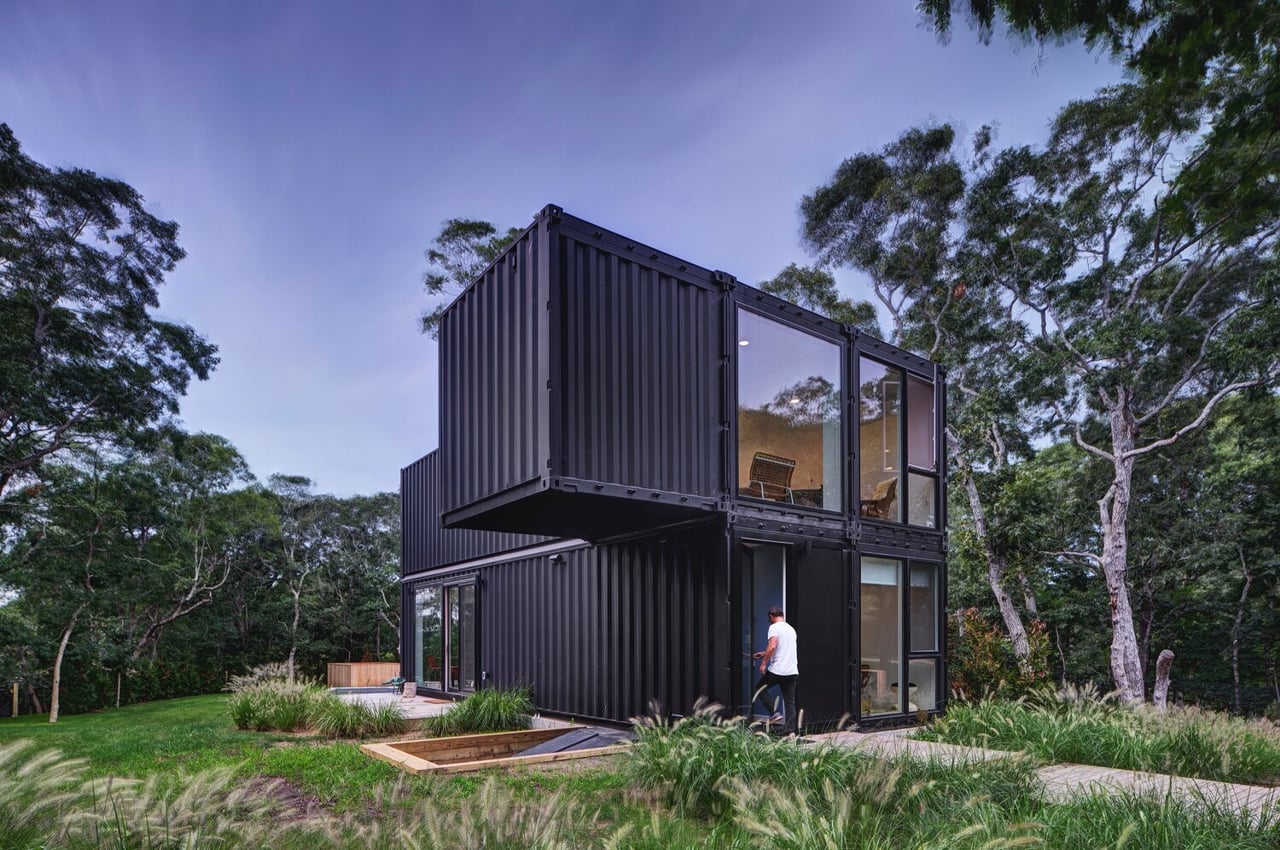
The Amagansett Modular house is a 1,800-square-foot prefabricated home constructed from stacked shipping containers.
As pandemic-related circumstances continue to change global industries, we are seeing the transformation of architecture take shape in real-time. While some architects and designers are working quickly to keep up with the shifting scope, others have been ahead of the curve for long before it became popular.
For the past ten years, the Manhattan-based MB Architecture firm has been research-prototyping their latest and most intricate prefabricated residential home yet. The Amagansett Modular home is a 1,800-square-foot home comprised of multiple shipping containers stacked together to form a unique, seemingly cantilevered structure.
Located in Amagansett’s East Hampton village, the Amagansett Modular is one of many modern homes that take disused shipping containers to construct modular houses with little waste. Considering the durable and inexpensive nature of shipping containers, they’re the ideal option for building prefabricated homes and MB Architecture is no stranger.
Modeled after their circa-2008 insta_house, the Amagansett Modular home is a custom design for a family of four. While the insta_house is a scalable, prefabricated structure formed from four stacked shipping containers, the Amagansett Modular house takes on two additional shipping containers to meet the couple’s requirements.
Amounting to a four-bedroom, three-bath family home, an additional module is connected to the rest of the structure via a glassed-in walkway that leads the home’s residents from the main living spaces to the family’s children’s bedrooms. Whereas the couple’s main bedroom is stationed inside the home’s halved, 10-foot module, the children’s bedrooms remain ground-level.
While the 10-foot, cubic module appears to be cantilevered, the top of it is drawn back with tension to ensure steady support, as the founder of MB Architecture Maziar Behrooz describes,
“The structural design of the 10′ pop-out on the second floor is unique. There are no beams under it—it looks afloat. Technically it is not a cantilever—but it is structured from the top (roof) and held back in tension, down to the foundation on the opposite side. It’s kind of a structural breakthrough—we used the inherent structural strength of the containers to our advantage.”
Throughout the home, floor-to-ceiling windows take up entire sides of the shipping containers. The expansive windows help to bring the home’s residents closer to the surrounding nature while also making the home feel more spacious.
Designer: MB Architecture